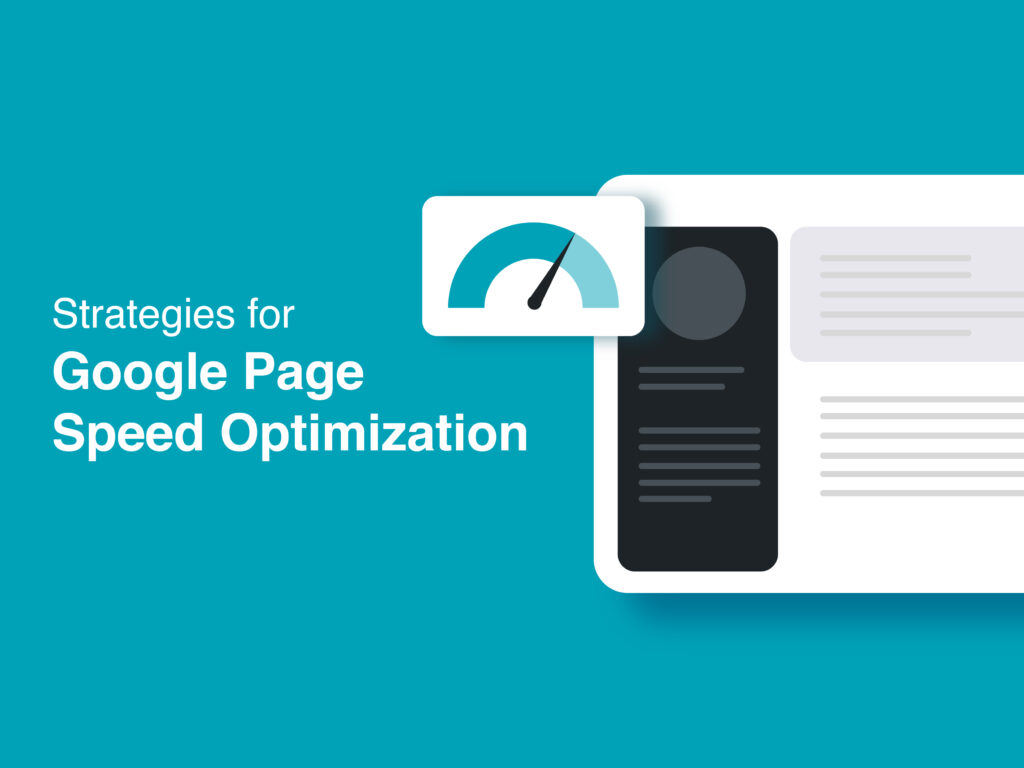Are you tired of waiting for web pages to load? Slow website speeds not only frustrate users but also harm your SEO rankings. With Google placing increased emphasis on page speed optimization techniques, it’s essential to ensure your website loads quickly. In this blog, we will quickly dive into our comprehensive guide and unlock the secrets to achieving perfect Google Page Speed Optimization.
Why is page speed important for SEO?
Page speed is essential for increasing SEO ranking. Page speed is one of the ranking factors considered by search engines such as Google. A faster-loading website boosts the user experience, which is an important part of SEO. Google has said that page speed is a ranking component, and that websites that are able to load fast are rewarded with higher search engine ranks. Furthermore, faster-loading websites are more likely to retain visitors, lower bounce rates, and enhance overall user experience, all of which contribute indirectly to improved SEO performance. As a result, optimizing your website’s page speed is a key strategy for improving your SEO ranking.
Understanding Google’s Page Speed Insights Report
Let’s break down the PageSpeed Insights report into three main sections:
Core Web Vitals Assessment: This section indicates whether your website has “Passed” or “Failed” in terms of Core Web Vitals.
These are essential metrics that Google uses to rank websites on mobile devices:
Largest Contentful Paint (LCP): These measures how fast your webpage loads, specifically the time it takes for the largest content piece to appear to the user.
Cumulative Layout Shift (CLS): It evaluates how stable your webpage is visually during loading, focusing on how much the content shifts around.
First Input Delay (FID): This metric checks the responsiveness of your site. It measures the time your website takes to react to the user’s first interaction, like clicking a button or a link. Note that FID is replaced by Interaction to Next Paint (INP) in March 2024.
The report might sound technical, but it’s about making your website faster, more stable, and responsive, which are all crucial for SEO.
A quick guide to optimizing the website speed:

Implement Full-Page Caching
In Website Performance Optimization, Full-Page caching is a real game-changer. This enhances response time and reduces stress on the server. With caching, the generated pages can be served from the cache without the need for executing repetitive code or querying database. This can prove to be an incredible boost for most websites.
Nevertheless, this approach would not work for websites that have many pages. For instance, a fallback caching mechanism is proposed as an alternative, where the cache contents alone are stored only. Automation of your caching mechanism, especially if you deal with large product catalogues, could make the above easier.
Set Up a Content Delivery Network (CDN)
Website owners need a CDN for fast page loading. The data stored on a CDN may include the site’s images, CSS and JavaScript, which are kept on globally distributed servers. The CDN delivers the data from the closest server, when a user asks for it, thus reducing latency. Opt for a CDN with good network coverage within regions with a high concentration of your potential audience.
Add Placeholders and Set Explicit Image Dimensions
Images play a significant role in webpage composition. However, using large, unoptimized images can slow down your site. To tackle this, ensure that images are properly sized and efficiently coded for your pages. Explicit image dimensions help avoid layout shifts and improve Core Web Vitals.
Implement On-the-Fly Resizing and Optimal Image Formats
Automatic resizing and image compression are essential for maintaining optimal load speed. Images should be automatically resized to fit their designated space while preserving the original aspect ratio. Additionally, consider delivering images in modern formats, like WebP, to improve load times further. Most of these optimizations can be easily handled by your CDN.
Add Lazy Loading for Below-the-Fold Content
Lazy loading is a technique that delays the loading of images and other content below the fold until users scroll to them. This reduces initial loading times and enhances performance.
Optimize SVG Icons
Optimizing SVG icons by merging smaller ones into a single file can reduce the number of network requests, resulting in quicker load times. By bundling icons together, you streamline the loading process.
Follow Google’s Recommendations
Google PageSpeed Insights provides valuable recommendations for optimizing your website speed. Some common suggestions include deferring offscreen images, removing unused CSS, and more. Implementing these recommendations can significantly boost your page speed.
Partner with the Right Technology Expert
While it may look a bit tough to optimize your website to achieve perfect Google Page Speed scores, having an appropriate technology partner makes it a reality. The website could benefit a lot by collaborating with professionals who specialize in Shopify speed optimization service and website performance optimization techniques.
Finally, a perfect Google Page Speed score is not just about optimizing a website for the speed, but also about the whole user experience. Increased loading speed results in fewer users leaving your site, raising search engine rankings, and ultimately, higher conversions, happier users, and improved search engine position.
Are you prepared to up your page speed score and enhance your website performance? Call our specialists to schedule a strategy session right now. Those precious seconds of loading time could determine the future success of your website.


